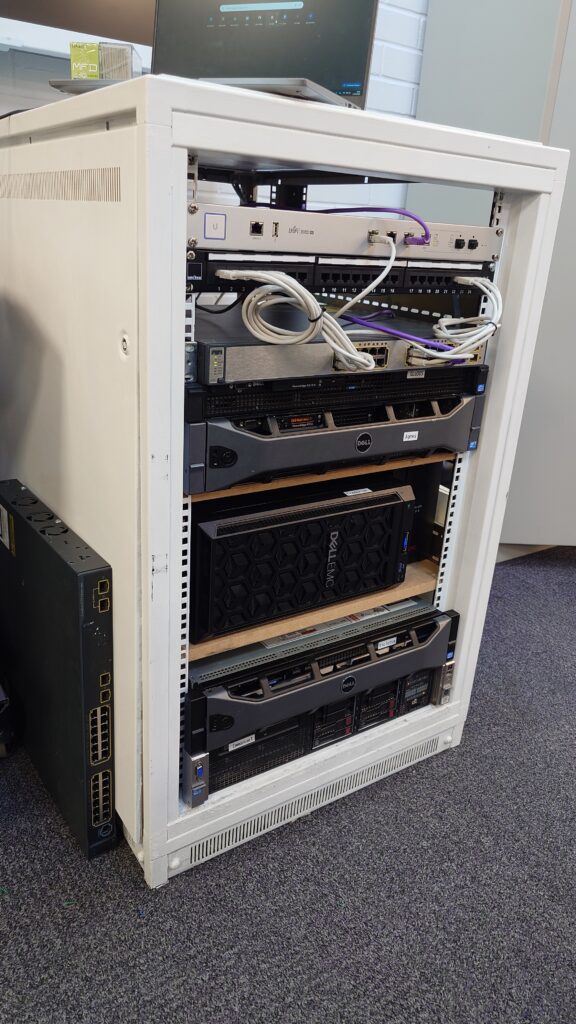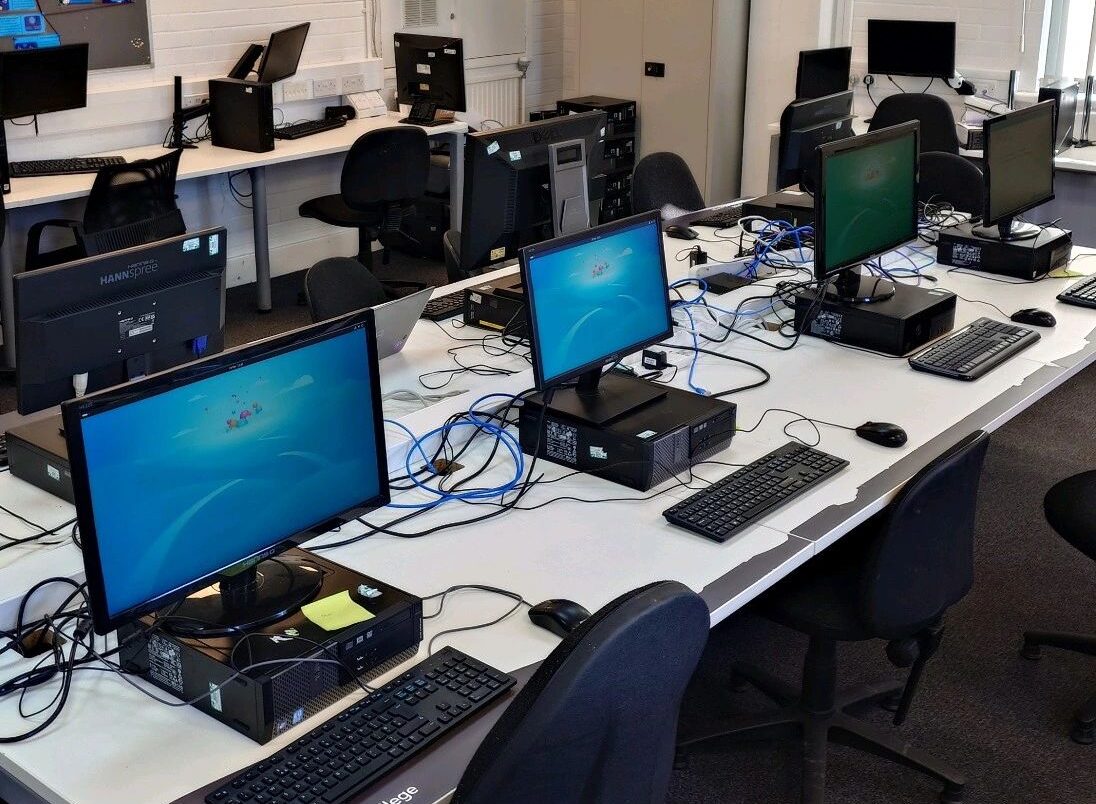Introduction
From March-May 2025 T-Level Digital students will be undertaking their occupational specialism assessments, as a lecturer delivering the Digital Support Services (herein DSS) OS I have been up to my ears in administrative and logistical conundrums of how best to run this beast of an assessment window.
This post however will not focus on that, that is not what makes the DSS assessment a particular challenge, it is the technical side of things. I have been preparing various aspects of my classrooms for this assessment since July 2024 as it has required extended cooperation between myself and our institution’s IT services team.
Lets break down the requirements, solutions, and some quality of life improvements that I have made to try and main the whole process as painless as possible for both my students and I.
The Requirements
At its core, the OS requires that each students have access to three machines (either physical or virtual) with administrative privileges and internet access. Anyone in education will tell you why that is going to be tricky, hence starting these conversations back in July 2024!
I worked with the IT team to go through some options. Initially, we played with the idea of using Azure DevTest Labs for this purpose however the cost and speed of these machines did not lend itself to a timed assessment (plus the licensing costs were definitely not viable for my class of fourteen).
We have been very fortunate as a campus to have received various donated hardware, both enterprise grade servers and office workstations. Following some convincing the IT services team agreed to provide a single network connected port in an isolated VLAN for use to connect to our own firewall in the test lab. And thus began our project to develop our own infrastructure:

Of course this isn’t by any stretch “current” gear, but it’s more than enough for our students to experiment with. Alongside this we have a set of around fifteen Dell Optiplex machines aged anywhere from 2012-2019, these are perfectly capable of being able to run a couple of VMs albeit at somewhat limited speed.
A first consideration here was to migrate all of the lab workstations to Fedora Linux. This was done for two reasons.
- Fedora is the testing ground for Red Hat Enterprise Linux (RHEL) so the support and documentation is very good. Plus getting students used to an OS they may be exposed to.
- Resource usage on these older machines is lower allowing for more “breathing room” for VMs under QEMU/KVM compared to the current state of Windows 10/11.
This reinstall definitely improved the stability of the lab machines as well as breathing new life into some of them performance-wise. All of the lab machines have been happily running Fedora since October 2024 and are only getting a fresh reinstall now in preparation for the OS.
The Preparation
Firstly, I needed a quick way to setup each machine with a fresh install of Fedora Linux and complete the necessary installation steps to get them ready for the assessments. Naturally, I just knocked together a bash script and threw it on Codeberg – script accessible here – that automatically sets up virtualisation, installs required packages, and pulls relevant ISO files from the resources file server. The file server was also very useful for distributing the exam files/workbooks across machines!
Neat! Then, I brought in my class of Level 2 Computing students and had them deploy this script across all fourteen machines, then complete a machine test checklist.
Next useful tool – Lancache. This killed multiple birds with one stone for me on our network, the sheer amount of downloading that we do is quite a shocker so a method of caching anything http should not only make the OS smoother but also any practical that involves Windows/Linux installations! This is currently sitting on our Docker VM with a nice 1TB of cache space. Future project – Fedora Repo Mirror!
Final issue – the class had to be split across two rooms with seven students in each space. Again, our campus network engineer was very cooperative in providing a repatch of a couple of RJ45 ports in each room, allowing our T-Level LAN to be passed through in to the other test room.
The scene was set. Fourteen workstations, ready to feel the burn of multiple VMs.
The Aftermath
I am writing now nearing the end of the assessment window for assignment three of the 2025 occupational specialism assessment and what an assessment it has been. This is my first time orchestrating anything like this exam, it has been exciting, challenging and stressful. I stand by that this is one of the most intense but industry-appropriate assessment that I have come across, see my post The Magic of the OS for more details on why.
However, due to the complexities of some of the tasks and the incredible stress on some of our older hardware, the systems did start to show their cracks. The majority of issues arose from the oldest of the machines that we were running, featuring IvyBridge i5 processors from 2012 – not idea for running two VMs simultaneously. RAM was also an issue for a couple of machines, the least RAM in any one machine was 12GB. This only became an issue when there were two VMs AND a large word document with many screenshots in it.
With these issues, there is really only one solution, newer machines. Again, I am in a very fortunate position in that both my head of department and principal were immediately on board and supporting a proposal for new T-Level Lab hardware. Currently, I am looking at the newer issue Dell Optiplex machines with 6C/12T processors, equally I have been pricing up custom builds with Ryzen 7 8C/16T processors too!
I am looking forward to running this again in two years time, I feel far more informed and ready to ensure a smoother assessment process next time!
If you have any questions, or will be running the OS next year, please feel free to contact me for any scripts/setup info!

Leave a Reply